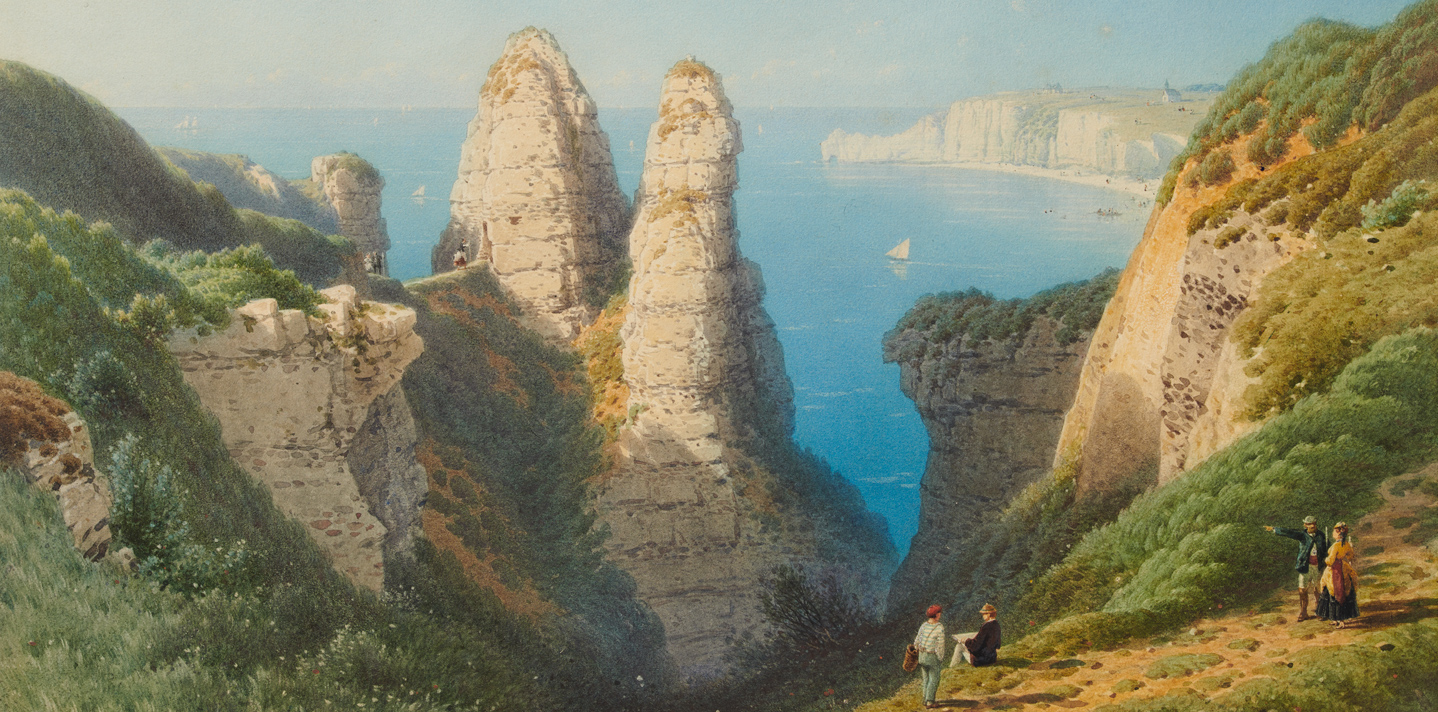
NOVEMBER 16, 2019–FEBRUARY 9, 2020
ABOUT THE EXHIBITION
Something about travel seems to go hand in hand with image making. When we encounter new destinations, monuments, and scenery, we feel eager to record our experiences in photographs; equally, perusing images of unfamiliar lands from the comfort of an armchair is often the trigger for booking (or at least dreaming about) our next vacation. Some might say that using visual aids can engage the imagination and allow us to travel faster in our minds than would be possible by physical means. That premise seems to explain the enduring popularity of armchair voyages even in our age of mass tourism.
Like travel itself, the speed of image production and diffusion has accelerated beyond anything tourists from earlier centuries would have thought possible. Yet, although methods of transmission are now digital and instantaneous, the impulse to document and enhance one’s travel impressions carries through from earlier and slower methods of image making. For nineteenth-century European and American artists—the main focus of this exhibition—drawings, sketches, and photographs made during their visits found various avenues toward wider exposure: they might be used as raw material for finished paintings, sold for compilation into personal albums, or diffused via the medium of print. Thus, advances in technology and distribution methods introduced Europeans and Americans to a wide array of people and cultures they had not encountered before.
Perhaps the most important form of mediation, even before these processes of distribution and dissemination, was the artist’s own vision. Then as now, what people see during their travels is not determined by itinerary alone. Expectations and preconceptions heavily shape the impressions that are taken away. Likewise, image makers may construct scenes that resonate as “typical” or “authentic” of a given culture even if they are not—or never were. Across a range of artists, media, and locales, this exhibition acknowledges the variable mixture of observed detail and pure invention that marks the most indelible images of foreign places and peoples.
